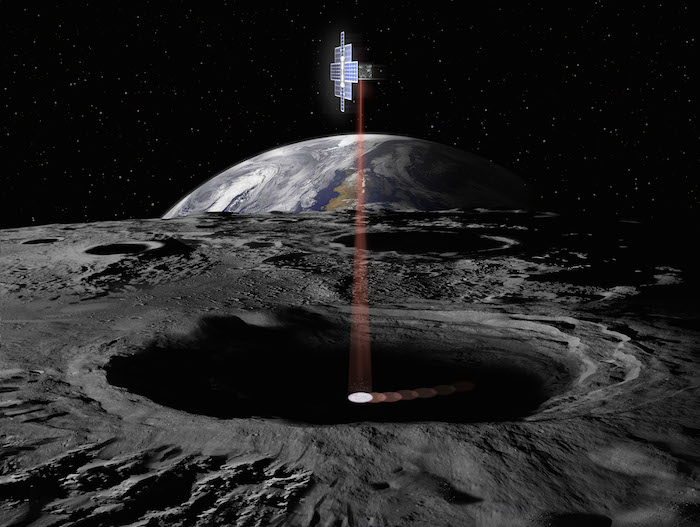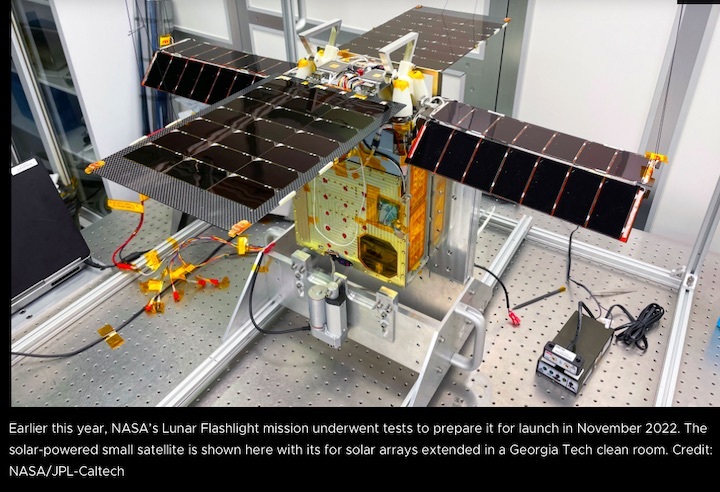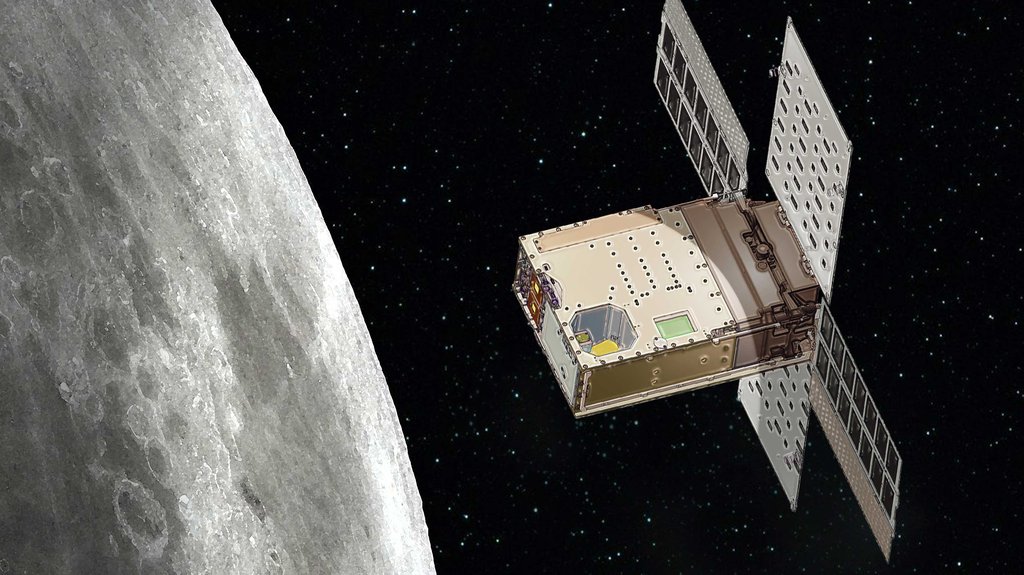2.02.2016
Mond Flashlight für Flug ausgewählt, als sekundäre Nutzlast auf Exploration Mission-1

NASA’s Lunar Flashlight Ready to Search for the Moon’s Water Ice

Set for a November launch, the small satellite mission will use lasers to search for water ice inside the darkest craters at the Moon’s South Pole.
It’s known that water ice exists below the lunar regolith (broken rock and dust), but scientists don’t yet understand whether surface ice frost covers the floors inside these cold craters. To find out, NASA is sending Lunar Flashlight, a small satellite (or SmallSat) no larger than a briefcase. Swooping low over the lunar South Pole, it will use lasers to shed light on these dark craters – much like a prospector looking for hidden treasure by shining a flashlight into a cave. The mission will launch aboard a SpaceX Falcon 9 rocket in mid-November.
“This launch will put the satellite on a trajectory that will take about three months to reach its science orbit,” said John Baker, the mission’s project manager at NASA’s Jet Propulsion Laboratory in Southern California. “Then Lunar Flashlight will try to find water ice on the surface of the Moon in places that nobody else has been able to look.”

This illustration shows NASA’s Lunar Flashlight over the Moon. The SmallSat mission will have a very elongated orbit, taking it within 9 miles (15 kilometers) above the lunar South Pole to search for water ice in the Moon’s darkest craters.
Fuel-Efficient Orbits
After launch, mission navigators will guide the spacecraft way past the Moon. It will then be slowly pulled back by gravity from Earth and the Sun before it settles into a wide, looping, science-gathering orbit. This near-rectilinear halo orbit will take it 42,000 miles (70,000 kilometers) from the Moon at its most distant point and, at its closest approach, the satellite will graze the surface of the Moon, coming within 9 miles (15 kilometers) above the lunar South Pole.
SmallSats carry a limited amount of propellent, so fuel-intensive orbits aren’t possible. A near-rectilinear halo orbit requires far less fuel than traditional orbits, and Lunar Flashlight will be only the second NASA mission to use this type of trajectory. The first is NASA’s Cislunar Autonomous Positioning System Technology Operations and Navigation Experiment (CAPSTONE) mission, which will arrive at its orbit on Nov. 13, making its closest pass over the Moon’s North Pole.
“The reason for this orbit is to be able to come in close enough that Lunar Flashlight can shine its lasers and get a good return from the surface, but to also have a stable orbit that consumes little fuel,” said Barbara Cohen, Lunar Flashlight principal investigator at NASA’s Goddard Space Flight Center in Greenbelt, Maryland.
As a technology demonstration, Lunar Flashlight will be the first interplanetary spacecraft to use a new kind of “green” propellant that is safer to transport and store than the commonly used in-space propellants such as hydrazine. This new propellant, developed by the Air Force Research Laboratory and tested on a previous NASA technology demonstration mission, burns via a catalyst, rather than requiring a separate oxidizer. That is why it’s called a monopropellant. The satellite’s propulsion system was developed and built by NASA’s Marshall Space Flight Center in Huntsville, Alabama, with integration support from Georgia Tech Research Institute in Atlanta.
Quelle: NASA
